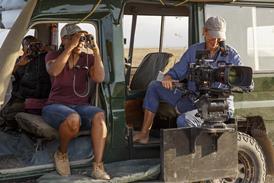The future of TV will be driven by linear but extended by VoD, says Robin Kroes, vice president, commercial, operations and corporate development at Chello DMC.
Last week Chello DMC held its first panel debate, in association with Broadcast magazine, that tackled how game-changing TV and video technology challenges can be met today.
What especially stood out from the discussion is the challenge, threat and opportunity posed by non-linear platforms to the TV status quo.
In the discussion, no one seemed to believe that linear TV is going away any time soon.
As Freeview’s managing director Ilse Howling put it, people commonly look back on the golden age of TV when really we’re just on the cusp. The amount of TV offered and viewed is higher than ever before.
Linear TV looks set to be further complemented - not compromised - by on-demand viewing.
Playboy TV’s managing director Jeremy Yates was of the opinion that it doesn’t matter if video on demand ultimately takes over from linear as they view it as just another platform.
FilmFlex chief executive Jeff Henry stated that alternatives have already been firmly established.
The fibre-based video on demand market has matured quickly and is now a tried and tested platform.
In the last five years Filmflex has streamed close to 70 million films to viewers through the Virgin Media movies on demand service which underpins the maturity.
Yet for most broadcasters and content owners, linear clearly has a long way to run and is likely to be the main way viewers watch their favourite content for years to come.
The new emphasis needs to be on growing linear TV audiences by extending and supplementing viewing with other devices and applications.
It’s the proliferation of these other platforms, particularly the more emergent routes to the viewer that are throwing up the challenges.
As Turner Broadcasting Systems Europe vice president of engineering Steve Fish put it, we have to create more and more product, each addressing smaller and smaller audiences, to still reach overall viewership numbers.
The old fashioned linear channel is now replaced by multiple feeds (HD, SD, localised) and VoD content which provides an increasing challenge to channels to continue to deliver within the budgets and deadlines set.
The explosion of new VOD options delivered over the internet and through applications for devices and connected TVs is increasing the strain significantly, which exacerbated by a lack of file standards.
For every individual video on demand or platform deal, a different file spec is needed. When multiplied across every country in every language and with specific metadata requirements, costs and complexity stack up. File standardisation clearly needs to catch up with the rate of change in order to capitalise on the potential.
That said, the benefits of digital workflow are making an impact. Tim Joyce, National Geographic International’s VP of operations and production services revealed that they save $400,000 (£256,000) a year since going tapeless.
An interesting insight from Steve was that Turner has developed apps but they so far have been launched at a smaller scale. It seems that as an industry we’re very much dipping our toes into the development of platforms to prepare for what is coming.
The gradual change to the ‘new viewing’ is to continue against a backdrop of linear TV, which will remain the undisputed lynch-pin of our industry. The focus has to remain on getting the most value out of linear TV across multiple territories.
The new art is about achieving the right balance of supplementary platforms in order to maximise the true value of content.
With a level of uncertainty and array of choice, broadcasters and content owners will have to continue developing new delivery formats and experiment with new ways of delivery as the right balance needs to be found by trial and error.
Complexity and high demands are something we will have to get used to, as that seems to be one of the few constants for the foreseeable future.

























No comments yet